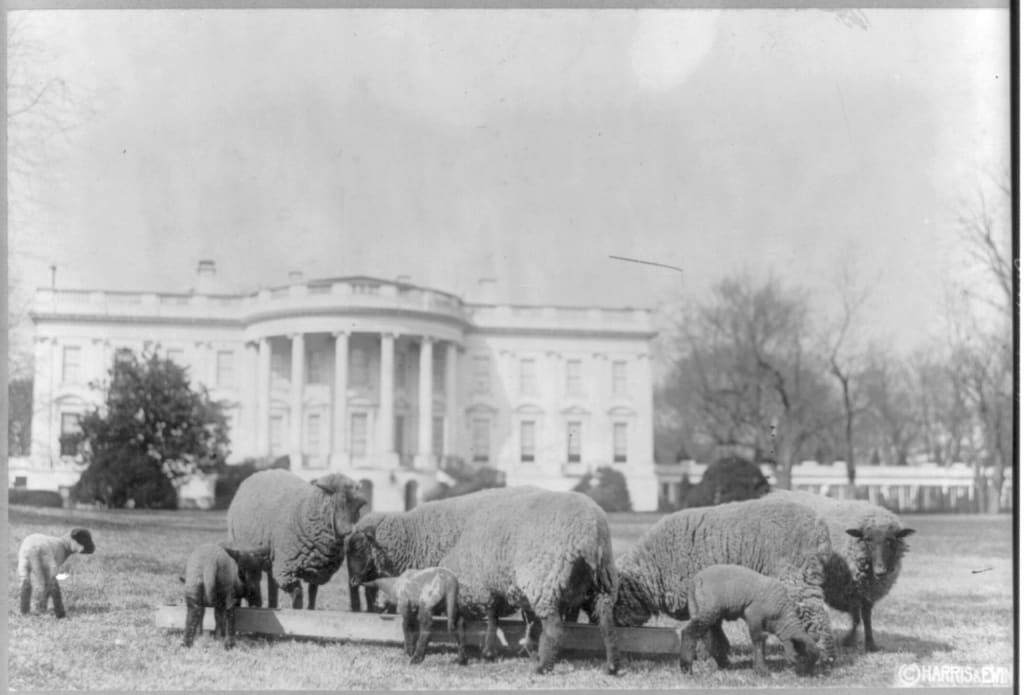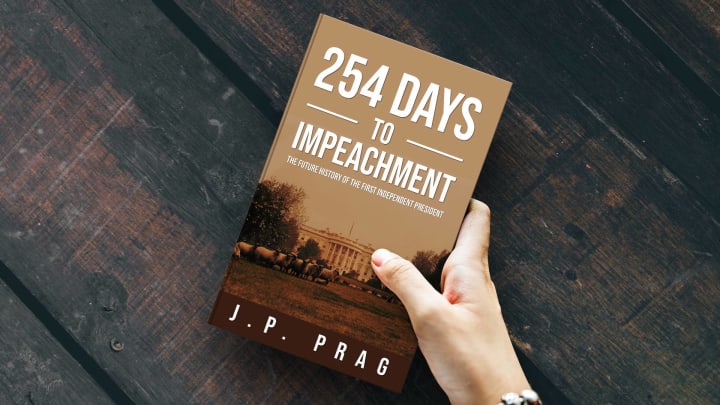
January 22nd (Washington, D.C.) – Three days after taking the Oath of Office, the new President of the United States finally entered the Oval Office for the first time and then spent an entire day at work in the White House.
The prior two days had been quite exciting. On the first day—really half day, since the President was sworn in at noon—the Commander-in-Chief ended the Inauguration Ceremony to announce a set of world-shattering Executive Orders that colloquially have become known as The Ten Pronouncements. Then, after boarding Air Force One and heading to the West Coast, the President and a military film crew dropped in on Area 51 to reveal its secrets. No, it was not aliens; instead, it was an admission that the United States has secretly been developing chemical and biological weapons, a violation of U.S. and international law.
You can read more about all of these stories in detail. Click here to access our live blog with all the latest developments coming out of the White House.
After so many exhausting and exhilarating endeavors, it seemed like it was time for a quiet day. Yet even when trying to slow things down, the President has caused quite a stir.
Emergency Orders
According to unnamed sources, the President began the day by calling an all-hands meeting for everyone who is receiving a paycheck from the administration. Part of it was a meet-and-greet type situation, otherwise it was time for the President to set the tone for how work is expected to go from now on. The President noted that everyone in the room aside from the elected officials are just employees. As employees, the expectation is that they will work regular hours that are suitable for their position and personal needs, and that they were not required to always be at the administration’s beck and call to respond to every little thing. One person in the room who had a recording device later shared some clips of the President’s presentation—which did, we are told, include a PowerPoint. In the recording, the President stated to the captive audience:
Not everything is an emergency. You want to know what is an emergency? Here is that list {assumingly pointing to a slide}. As you can see, this is something like the country is being invaded, a terrorist attack, an unexpected natural disaster—meaning not one we know about ahead of time and can make preparations for. Basically, it’s when there is a sudden loss of life, or there is a potentially imminent danger to the United States, its people, or its property. When these things happen, it is all-hands-on-deck. Otherwise, I expect you to maintain a healthy work/life balance, with a special emphasis on that “life” part.
After this, the leader of the free world made it clear that no one, not even the President, will be instantly responding to “whatever dirt the media has come in with” or give in to demands for an immediate response by anyone, not even members of Congress. Here, the President called up other members of the transition team and division heads to explain that the administration was moving away from “constantly being in a reactive mode.” Even though the President had already caused such massive waves, it was explained that none of what had happened could be categorized as a true “emergency”. Each one, while major, was not a “catastrophe still in motion”. Therefore, similar future announcements from the President could be addressed in an orderly, calm, and scheduled manner.
Further, in an effort to perhaps slow down the news cycle, the Communications Director let everyone know that daily briefings with the press would be eliminated. Instead, the President and relevant department heads would have a regular two-hour meeting slot set up, preferably on Friday afternoons. However, it would not be with the entire press corps, but instead with a single representative that would be chosen well in advanced to conduct the interview and disseminate information to the rest of the media. At this point, the President jumped in and said:
And to be clear, this is not going to be just CNN, Fox News, Politico, the Washington Post, and all the old guards cycling through. I want to mix in livestream stars, social media personalities, podcasters, whoever is out there. And it does not matter what is going on; we are not going to change the schedule. If there is a standoff with the Chinese Navy in the South China Sea and I have an interview scheduled with a fashion blogger, that appointment is going to be kept.
However, both the President and the Communications Director emphasized that the White House would always have its own film crews capturing the sessions and would post the raw video as well as put out press releases, video clips, and other such media that shows the administration’s perspective. The Communications Director said that at the behest of the President:
We will not let outsiders’ fancy editing techniques determine our messaging. We will always be prepared to preemptively dispute potential ways these interactions can be manipulated for specific audiences or be taken out of context.
At this time, no one in the press has been officially notified of these initiatives, nor has any method been instituted to “sign-up” for these face-to-face meetings with the President, although Friday is fast approaching. When asked for comment, staff had apparently gone home for the day and could not be reached.
Old House, New Tricks
As upsetting as these announcements may have been to the press, it must be noted that they have very little impact on the populous at large. For that group, the President had a few interesting tidbits to share.
First up, the President let the staff know about a number of steps that would be taken around transparency. At the top of the docket will be making the President’s calendar completely unrestricted. More so, the President asked that a public facing website be created so that anyone could request to book themselves into an open slot on the calendar. The President highlighted that the Oval Office should not be available only for the political elite because they were all, in reality, subservient to the American people. As the President told the crowd:
In case my Chief of Staff or my Executive Assistants are worried, I will be personally maintaining my calendar and will be blocking off time for heads-down work, too. And perhaps a little break, from time to time?
Yet, it does not appear that the President wants the public to always be at the White House. Specifically, the President made it known that all sorts of holidays and celebrations would be cancelled, including things like having a Christmas Tree. For this, the President not only noted objections based on “establishment of religion” grounds in a secular government setting, but expressed a general concern about the cost of such events for the American taxpayers. The price tag for each affair runs into the millions of dollars territory, especially considering the amount of security that is required. Overall, the President appeared to be trying to end what the administration considers “frivolities” while also adhering to a very strict interpretation of the first Amendment.
In that same vein, although the President emphasized that the staff should treat their professional life more like a “regular job”, that did not mean it was still not a “place of work”. Because of this, the President put forth the need for “a standard office environment” and less of the pomp and showboating of prior administrations. In other words, the President did not want more “photo ops” for political purposes, but instead wanted to spend the Executive Branch’s energies and resources on doing the job of governing.
After this, a question was asked, perhaps flippantly, that, if not for “Easter Egg Rolls” for toddlers, then what would something like the White House Lawn be used for? To this, the President had an actual answer that proved that somewhere under that stern, enigmatic exterior was the capacity for fun, of a sort:
Back between 1918 and 1920, President Woodrow Wilson—in an effort to help with the war effort by reducing costs and creating useful items—brought in a flock of sheep to help keep the grass trim. Well, I want to do the same. Let’s bring back sheep and goats and whatever else makes sense to maintain the lawns. Let’s have more than a garden; let’s have a functioning farm!
Later in the same soliloquy, the President continued:
These are among the more environmentally friendly methods available to us. And in that same vein, where are our solar fields, our windmills, and our geothermal pumps in such vast open spaces? We need all of that. Then, afterwards, we can sell the wool, milk, harvest, and energy we produce and donate any excess proceeds to a worthy cause, or perhaps an unworthy one like our national debt. We can lead the rest of the country—mayhap the world—by the example we set in our own abode.
Thus ended this so-called uneventful day at the White House. At this point, we can only wonder: what new surprises will await us tomorrow?

The above piece is an excerpt from the speculative fiction novel 254 Days to Impeachment: The Future History of the First Independent President by J.P. Prag, available at booksellers worldwide.

Learn more about author J.P. Prag at www.jpprag.com.

254 Days to Impeachment is a work of mixed fiction and nonfiction elements. With the fiction elements, any names, characters, places, events, and incidents that bear any resemblance to reality is purely coincidental. For the nonfiction elements, no names have been changed, no characters invented, no events fabricated except for hypothetical situations.
About the Creator
J.P. Prag
J.P. Prag is the author of "Compendium of Humanity's End", "254 Days to Impeachment", "Always Divided, Never United", "New & Improved: The United States of America", and "In Defense Of...", and more! Learn more at www.jpprag.com.






Comments
There are no comments for this story
Be the first to respond and start the conversation.